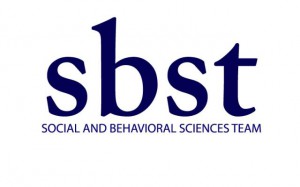Obama Orders More Behavioral Science in Policy
Even as the U.S. Congress sharpens its knives to eviscerate federal funding of social and behavioral science this fiscal year, President Barack Obama doubled down on applying those disciplines to policy.
Tuesday, the White House released the debut annual report from its Social and Behavioral Sciences Team, while Obama issued an executive order calling for the federal government to better leverage social and behavioral insights into making government work better. The order includes calls to recruit more behavioral scientists into the government and to strengthen ties between federal agencies and the research community.
 Meanwhile, the Behavioral Science & Policy Association is launching a “behavioral science and policy series” to identify promising avenues for applying behavioral science to public policy at the Federal level. In the coming year, working groups will deliver white papers that propose particular applications of behavioral science that can be applied, tested, and implemented at the federal level and in the near term. That effort will draw in a score of prominent research centers and think tanks (e,g. The Brookings Institution, Harvard University’s Behavioral Insights Group, the Gerald R. Ford School of Public Policy at the University of Michigan, the Kahneman-Treisman Center for Behavioral Science and Public Policy at Princeton University) to contribute to that policy series.
Meanwhile, the Behavioral Science & Policy Association is launching a “behavioral science and policy series” to identify promising avenues for applying behavioral science to public policy at the Federal level. In the coming year, working groups will deliver white papers that propose particular applications of behavioral science that can be applied, tested, and implemented at the federal level and in the near term. That effort will draw in a score of prominent research centers and think tanks (e,g. The Brookings Institution, Harvard University’s Behavioral Insights Group, the Gerald R. Ford School of Public Policy at the University of Michigan, the Kahneman-Treisman Center for Behavioral Science and Public Policy at Princeton University) to contribute to that policy series.
“Adopting the insights of behavioral science,” a White House fact sheet announcing the executive order quotes Obama, “will help bring our government into the 21st century in a wide range of ways – from delivering services more efficiently and effectively; to accelerating the transition to a clean energy economy; to helping workers find better jobs, gain access to educational opportunity, and lead longer, healthier lives.”
The order identifies four specific areas in which agencies can tap into “behavioral science insights,” many of them focused on subtle issues related to presentation and priming:
- Streamlining access to programs
- Improving the presentation of information, including many federal forms, taking into account format, timing, and medium.
- Structuring choices carefully, including consideration about presentation and structure of options offered by agencies, including default settings and the number and arrangement of options.
- Considering a full range of incentives: Where policies create incentives to take specific actions, such as saving for retirement, agencies should consider how the frequency, presentation, and labeling of benefits, tax credits, and other incentives can more effectively and efficiently promote those actions, with a specific focus on opportunities to use nonfinancial incentives.
In addition, the order formally establishes the year-old Social and Behavioral Sciences Team, or SBST. An arm of the National Science and Technology Council, SBST is a multidisciplinary group of experts coordinated by the Office of Science and Technology Policy (OSTP) and based at the General Services Administration’s Performance Improvement Council; it represents a dozen agencies ranging from National Science Foundation and OSTP to the Department of Agriculture and Department of Veterans Affairs.
“SBST was created as an answer to the president’s call to make government programs more effective and efficient for millions of Americans,” said Josh Wright, executive director of ideas42, one of the behavioral organizations taking part of the Behavioral Science & Policy Association policy series and an advisor to the SBST since its inception. “Today’s announcement and President Obama’s executive order demonstrate that the SBST is truly delivering with a range of projects that harness behavioral science insights to help Federal government programs better serve the nation while saving taxpayers money.”
The annual report (PDF here) accompanying the executive order noted that the SBST’s efforts “are already paying dividends for Americans,” in both service and savings.
“Over its first year,” according to the report’s executive summary, “SBST focused on executing proof-of-concept projects where behavioral insights could be embedded directly into programs at a low cost and lead to immediate, quantifiable improvements in program outcomes. To generate reliable evidence about the effectiveness of integrating behavioral insights into programs, SBST designed these projects, in nearly all cases, as randomized trials. This report presents the results of all completed SBST projects, including projects that did not yield statistically significant improvements.
“Because SBST projects are designed to address only the behavioral barriers that affect how people engage with programs, project effects can be modest. Yet, because behavioral changes to program administration often require little or no additional cost, returns on investment can be large even when project effects are small. It is no more expensive to send an effective version of an email than an ineffective one.”
For example, “Adding a signature box to the top of an online form, where vendors confirmed the accuracy of self-reported sales, led to an additional $1.59 million in fees collected by the federal government within a single quarter,” according to the report.
Another example focused on a current hot-button issue, students loans.The report noted that SBST-driven reminder emails to student-loan borrowers who missed their first payment led to a 29 percent increase in the number of delinquent borrowers making a payment. In addition, sending “a low-cost, timely notice” to borrowers about alternative repayment plans led to a four-fold increase in applications for these plans.
The report details all of the first year’s SBST projects, ranging from redesigned data-entry forms to calls to print on both sides of a sheet of paper, and outlines more than 20 new projects teed up for the second year, including efforts to improve retirement security, expand access to higher education, improve economic opportunity, improve health, and address energy and environmental challenges.
The team echoes Britain’s Behavioural Insights Team, sometimes called the “nudge unit,” self-described as “as the world’s first government institution dedicated to the application of behavioural sciences.” The nudge unit had been a part of Britain’s government but is now a “social purpose company” owned in part by the government.
































































































